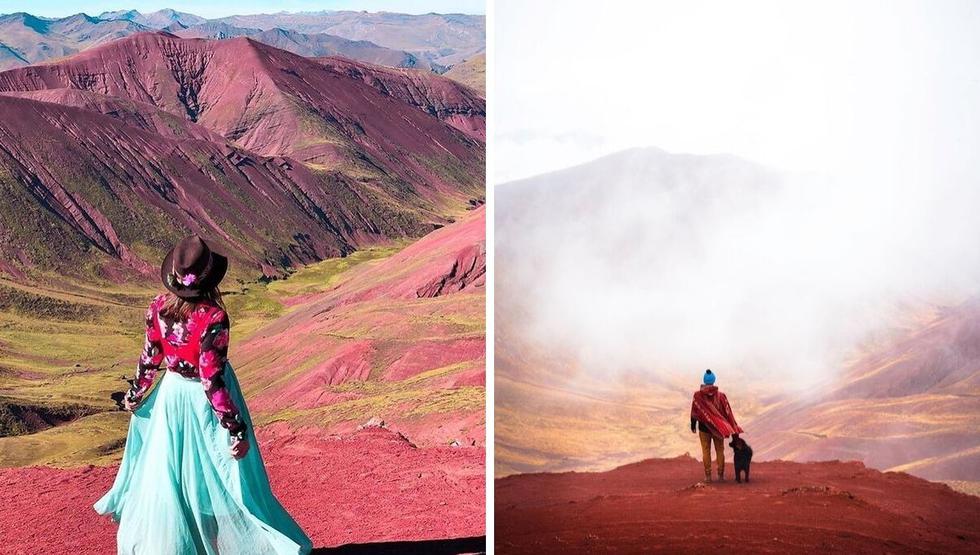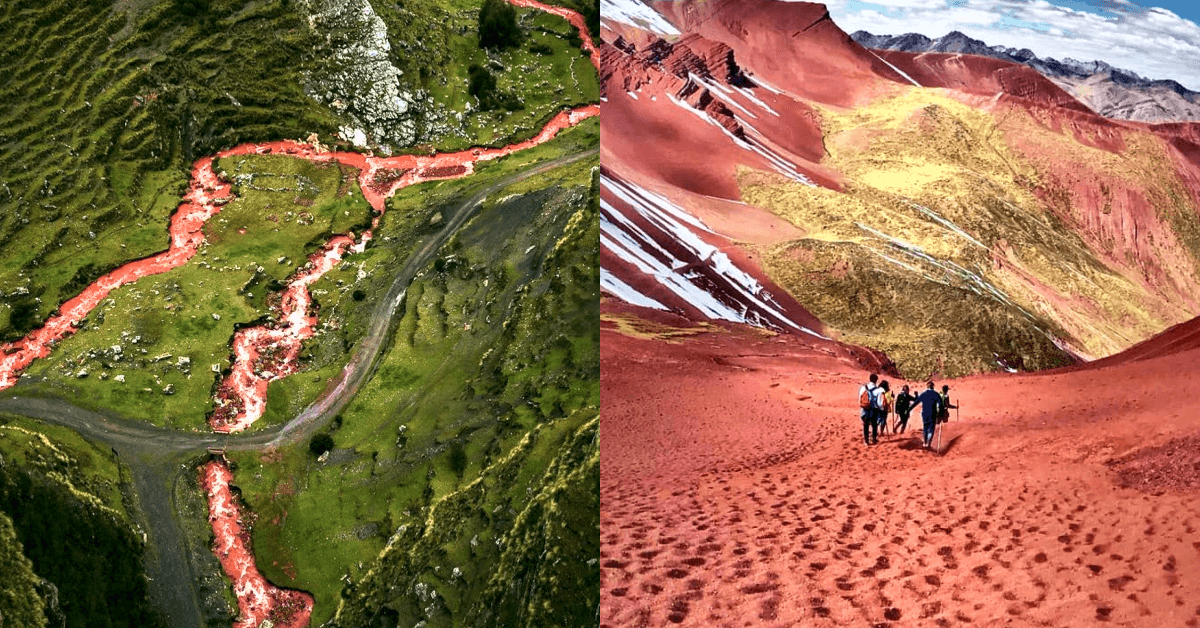Many know the most popular tourist attractions in Cusco, such as Machu Picchu, Ollantaytambo or the Rainbow Mountain. However, there are new natural attractions that are attracting more and more the attention of travelers. They are the Red Valley and the Red River in Cusco Perú.
At the end of April of this year, it was discovered near the so-called Mountain of the 7 colors or Rainbow Mountain, a red river whose images and videos surprised. It is also close to the so-called Red Valley, a space well known by visitors of all kinds, but, however, it has not been until now that this river has been discovered.

Red River in Cusco 
Red River in Cusco
The good news is that due to its relative novelty, you will not find such an influx of tourists in the Red River in Cusco Perú, so you can stroll at your leisure and take the time you want to explore and admire this natural beauty.
I shared this discovery with my daughter, a seven-year-old girl, so the walk does not represent any difficulty, nor is it too demanding. Contemplation followed each step and then admiration: It’s blood!
Red River in Cusco Perú: What Makes it Red?
The reason what makes the Red River Cusco Perú red is the product of the minerals that fall to the river bed due to the heavy rains that characterize the Peruvian highlands.
Thus, the rains have caused the landslide of the mountain and other nearby hills, and the color of the minerals has been washed away and accumulated in the river bed.
Both reason is what makes the Red River Cusco Perú red.
How to get to the Red River in Cusco Perú?
To get to the Red River in Cusco Perú, we recommend that you go to a tourism agency, some agencies may include or visit this place, so check with your agency.
Without a doubt, the view is spectacular and arouses the curiosity of many visitors. Best of all, most of the tours take you through the Red Valley and the Palcoyo Mountain, similar to Rainbow Mountain, with these tours it is possible to see the river.
You should know that the color will only present in the rainy season, do not expect to see red in the dry season.
Note that being a valley, you must have good hiking shoes, sun protection, and a raincoat, in case it rains.
Red Valley
The Red Valley is a chain of mountains and streams that, as its name mentions, are red earth.
In the season with lower temperature, you can see an unbeatable scene: the snow covering the peaks of this mountain range. In this natural spectacle you can see how the reddish color of the earth and the white of the snow mix.
Although this attraction has been discovered recently, it already receives about 500 visitors a day.
How to take the red route?
If you are visiting any of the natural and archaeological attractions that are located on the outskirts of the Imperial City, we recommend that you take a tour of these two tourist attractions.
Due to its relative novelty, you will not find such an influx of tourists, which will allow you to take the time you want to explore and admire these natural beauties.
The red route begins with the Red Valley. This attraction is located in the province of Canchis, Pitumarca, in the department of Cusco. If your itinerary includes a visit to the Mountain of the 7 colors, you can take a jump to the Red Valley because it is very close to there.
The Red Valley is located next to the foot of the snowy Ausangate, one of the most important mountains within the Peruvian Andean worldview. It has an altitude that exceeds 5200 meters above sea level. Reason why we recommend that you take a rest day in Cusco to acclimatize.
To get to the Red Valley, you have to leave from the city of Cusco. On Huayrurupata Avenue you can find transportation to take you south to the town of Checacupe. This first section will take you approximately 2 hours.
From there the trip continues to Pitumarca, located just 15 minutes from Checacupe. When you get to Pitumarca, the second section begins, which you have to do walking for two or three hours to the Valley.
Although the trip to the Red Valley may sound exhausting, we remind you that on the way you will be able to observe various natural settings. In these you can find the local flora and fauna, as well as small towns with very peculiar and friendly characteristics.










